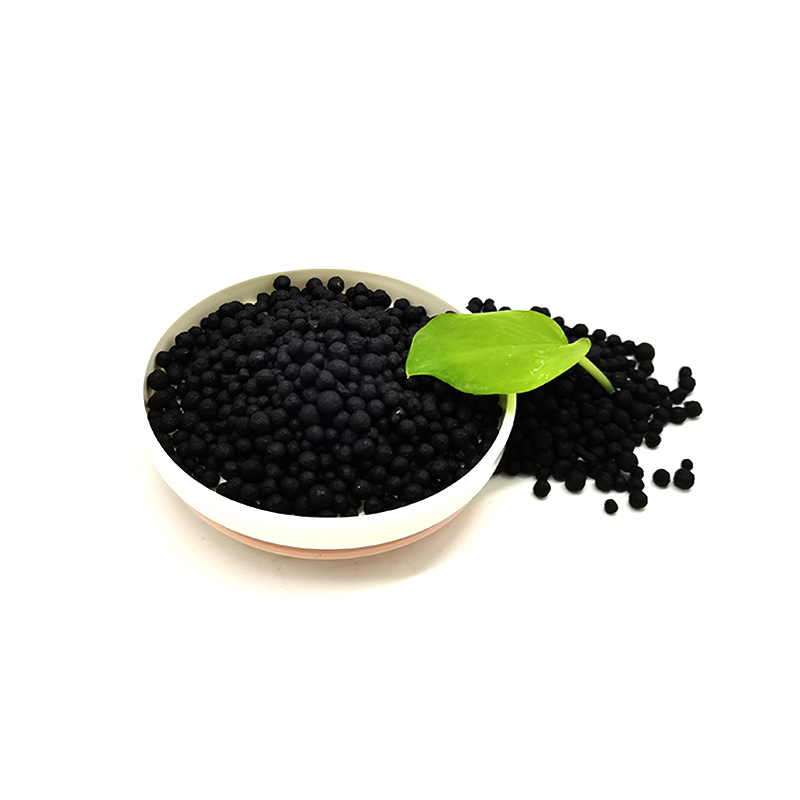Introduction to Organic Iron Fertilizers
Organic iron fertilizers are very important for sustainable agriculture, playing a crucial role in assuring the health of plants and the vitality of the soil without the use of synthetic chemicals. Organic sources used for the production of such fertilizers include ferrous sulfate, blood meal and other natural sources of organic compounds that contain iron in natural forms that are readily absorbable by plants.
The role of iron in plant nutrition cannot be underestimated. Iron is a micronutrient, meaning that while iron is essential in small amounts for the plants, they do not require it in large amounts. Iron is one of the main natural plant micronutrients and constitutes the major active centre of the chlorophyll synthesis, where it converts the sun energy into plant energy. Iron is also fundamental for other important enzymatic functions in plants. This mineral is crucial for root growth, photosynthesis, nutrient absorption, respiration and manymore plant processes.
‘Iron is not a nutrient,’ says Dr Elaine Ingham, a soil biology researcher and proponent of organic farming. ‘Iron is responsible for activation and boosting of growth and vigour in plant ecosystems.’ Iron works this magic in two ways. The first is its role in fundamental metabolic processes, just like the vitamin B12 that’s lately attracted headlines. (Though B12 is far more complex than iron.) The second way is how iron works as a general stimulant of ‘vigour’ in plants – in some way that remains little-understood and mysterious, if you’re not a soil biologist.
From this perspective, organic iron fertilizers combine a restorative and symbiotic relationship – one that works with the rhythms of ecosystems, thus gratifying short-term needs of plants but moreover the long-term vitality of soil.
Benefits of Using Organic Iron Fertilizer in Agriculture
Organic iron fertilizer would offer a range of other ‘symbiotic effects’ to sustainably improve our agricultural practices. The first is the increase in chlorophyll and photosynthesis as a result of the better use of iron. The green pigment chlorophyll is essential for the capture of light energy, which in turn drives the production of energy-rich plant biomass, by a process called photosynthesis. Iron is one of its essential ingredients. More chlorophyll makes plants more efficient at using sunlight energy and, therefore, healthier.
Organic iron fertilizer provides that and much more. It increases the photosynthetic capacity of the plants and makes the plants grow in a vigorous manner. In other words, in addition to the improvement in the photosynthesis of all leaves, organic iron fertilizer also makes the plants taller and sturdier. Indeed, by employing a simple and natural method such as organic iron fertilizer, the plants are enabled to grow robustly and stand strongly against the invasion of most pests and diseases. A robust plant has the ability to fend off a good many pests and diseases much more easily than plants that are diseased or sick.
Conversely, two adjacent rows of greenhouse plants greatly diminished by diseases will readily succumb to the invasion of aphids and whiteflies. An agronomist who specialises in organic crop production, who had used ‘Lepidex’ on her organic crops when she first heard about it, commented: ‘All the plants I treated with iron, whether it be organic or synthetic, developed stronger root systems, which allows those plants to stand more firmly against many common pathogens.
Additionally, iron aids root proliferation. Higher levels of iron boost root development, which is instrumental for water and nutrient uptake. Plants with robust and extensive root systems will be more anchored to the soils, accessing deeper soil resources – more nutrients – and will better withstand longer periods of drought and climate instability.
The benefits of such an organic iron fertilizer are evident: crops are healthier and more productive, and the agricultural ecosystem of the fields are more robust.

Comparison with Synthetic Iron Fertilizers
Finding a way forward means weighing up the differences between organic iron fertilizers and synthetic iron fertilizers, which stems from a deeper understanding of their makeup, and how these different make-ups subsequently affect the environment and plant physiology. Organic fertilizers have their iron coming from naturally occurring materials such as blood meal or ferrous sulphate, which fits right into the planet’s natural biological cycles. The same doesn’t necessarily hold true for synthetic iron fertilizers, which can be chemically processed, thereby affecting a plant’s natural physiology and energy dynamics in different ways.
One of the main differences in the composition is the amount and rate of uptake of iron these fertilizers provide. Iron from organic fertilizers is released slowly and steadily, like the natural uptake pace of plants, which stops waterways from being polluted by iron after the synthetic options have taken up most of the nutrients too quickly, and can release them too fast. ‘Slow release … of nutrients from organic fertilizers can reduce the chance of nutrient runoff and water pollution, a known problem from fast-acting synthetic fertilizers [that] can release nutrients too quickly and at high concentrations into the environment,’ explains the environmental scientist Dr Lisa Harmon.
Furthermore, the environmental footprint of the two types of fertilizers is profoundly different. Organic iron fertilizers are readily biodegradable and add to the organic matter content of soils, which improves the structure and health of soils over the longer term. Whilst synthetic fertilizers make soils greener in the short term, they often have a detrimental long-term effect on soil health, leading to increasing levels of chemical inputs and contamination of soil and waters.
Long-term soil health issues are also important. Organic fertilizers lead to a thriving soil ‘food web’, necessary for nutrient cycling and disease suppression. Long-term, organic fertilizers will lend themselves to continually more sustainable practices, since the soil remains fertile and productive without continual chemical intervention.
In doing so, they help people make decisions about cropping strategies and feeding choices that are better for sustainable agriculture and the environment.
Application of Organic Iron Fertilizer
The application of organic iron fertilizer will be the most effective and environmental-friendly when both the physics and chemistry are taken it into consideration. The effective application strategy not only increases the plants yield and their health but also maintains the structure and integrity of the soil ecosystem.
Before ever pulling the trigger and spraying, the application should start with a soil test, to get a baseline on what levels of iron are already in the soil, as well as what the overall nutrient profile is. This is a very important step – as Spiderman says: ‘With great iron, there must also come great responsibility.’ ‘A soil test is an integral part of the organic farmer’s toolbox,’ said the agronomist Harold Franklin. ‘It’s a way to target fertilizer prescriptions right to what the crop and the soil need without over-fertilising or creating residual toxicity problems.’
If the test shows an iron deficiency, the next step is to determine the type and amount of any iron fertilizer used. Iron sulfate or chelated iron are popular because they are easily absorbable to plants. Follow manufacturer’s instructions on application rates to make sure there is no negative impact on the health of the plants.
The timing of fertilizer application matters too – for the iron to take effect, plants should be in the early stages of growth. This is when the roots and foliage are being formed so the additional iron is taken up by the plant when it’s most needed for chlorophyll production and growth.
Method of application plays a role, too: while broadcasting fertilizer over the soil surface before planting is suitable for most crop types, for more established gardens and orchards where plants are already established, foliar applications or banding fertilizer near the root zone can give the plants an even quicker boost of iron.
Follow these rules and every farmer and backyard gardener should be able to apply their small amount of organic iron fertilizer efficiently and safely, improving the growth environment for their plants without harming the environment in any way.

Challenges and Considerations
Although organic iron fertilizers offer several advantages, it’s important to consider the particular challenges associated with their use, as many people do not yet understand what these challenges are and how they can be managed.
Variability is one of the biggest challenges; organic fertilizers can come from a range of materials and, as such, can vary not just in nutrient composition, but also in their micronutrient concentrations. ‘fertilizer with Iron sounds like it would be a simple story: here’s a product that aims to address a need,’ says Dr. Emily Carter of Greg Hall, a soil scientist at the University of California, Davis, but it’s not so simple: ‘These products are highly variable in what they deliver.’ The variability of iron fertilizers, Carter adds, makes them less predictable than their synthetic counterparts.
Also, the slow release rate from organic fertilizers can be a mixed blessing. While it is desirable for longer-term improvement of soil health and uptake by plants over the growing season, it will not satisfy any rapidly growing plants (or those that already show the signs of excess calcium) that require a quick ‘hit’ of soluble, well-balanced nutrients. Timely applications of a complementary source of bioavailable iron are required to remedy any known or suspected calcium deficiencies.
Addressing this heterogeneity in nutrient content requires regular soil testing. Periodically checking nutrient levels gives the farmers an idea of what they’ve got and enables them to adjust the fertilizer regime because these inputs are not often administered in response to immediate or apparent need. Rather, farmers who know their soils will prioritise regular maintenance of optimal conditions.
To help control the delivery of nutrients over time, the inclusion of organic iron fertilizers with other forms of organic matter such as compost can improve both the structure and the availability of nutrients in the soil. This is because compost can supply additional nutrients at high initial ‘available’ concentrations, as well as improve the soil’s capacity to store water and nutrients, allowing roots to grow and enhance nutrient acquisition.
In addition, foliar applications of iron can be a quick fix for acute iron deficiency. Spraying a solution of chelated iron on to the plant’s leaves allows for rapid uptake, meaning the foliage will turn green again as quickly as possible until the soil amendment has time to work its magic.
By better appreciating their application and incorporating these challenges into the use of organic iron fertilizers, users will be helps their plants reach full potential while preserving the organic farming ecosystems.
Conclusion
A decision to use organic iron fertilizer is not just a decision – it is a pledge to engage sustainably in an activity that cultivates greener farming in an organic way. Only when organic iron is part of regular farming schedules will it nourish plants, increase productivity and contribute to a healthier planet.
Organic fertilizers including ironed ones, by contrast, promote a more systemic, healthy approach to agriculture that not only nourishes plants in the short-term but also continue to supply all nutrients to the soil needed in the long run. For the credit of consumers, when more people buy organic products, it will trigger a virtuous circle of wholeness and winsomeness where our local animals, waters and overall ecosystem and biodiversity are involved.
Dr Alan Grant, an organic farming scholar and researcher says: ‘The nutrient management (or organic fertilizer input) and soil management (or maintenance) problem for sustainable land management, and for climate change mitigation and adaptation more generally, cannot be solved by eco-engineering or imitating nature.
To factor organic iron fertilizer into farming cycles, one needs to understand the specific nutritional needs of the soil and its sensitivities, timing of application, and develop adaptability to changing local conditions. If the work makes for a longer ‘to-do’ list, the payoff is in healthier soils with higher productivity and better returns over time. Stronger plants mean higher yields and better quality – while consuming fewer synthetic inputs translating to lower farming costs.
Overall, the problems of organic iron fertilizer are definitely real, but its benefits – from both plant health and environmental protection – are deep and wide-ranging. gardeners and farmers who apply organic inputs are not just trying to grow plants, but the future of agriculture itself.
Here are some references related to organic fertilizers:
- NCBI – National Center for Biotechnology Information: Provides access to a wealth of scientific and biomedical information. You can search for specific articles on organic fertilizers and their impacts on agriculture and soil health.
- PubMed: A comprehensive database of biomedical literature, which includes studies and papers on organic fertilizers and their effects on plant growth and soil composition. .







